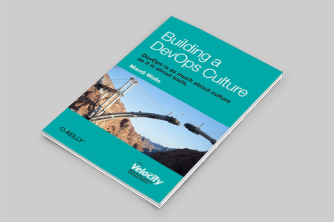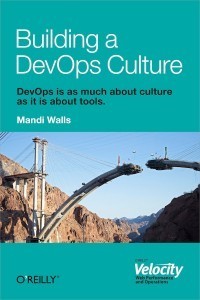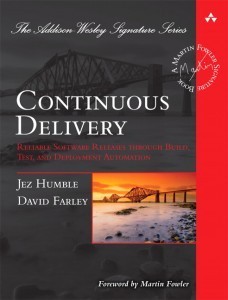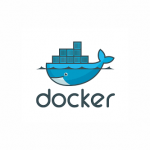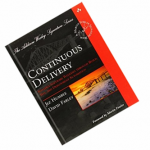From adopting the culture, to implementing Continuous Delivery
With the relative newness of DevOps, there are not yet a ton of DevOps books. That’s why we’ve assembled a list of the 7 best DevOps books based on four criteria: the number of ratings from Amazon, the average Amazon rating, number of ratings from GoodReads and the average GoodReads rating. Both Amazon and GoodReads use a scale of 1 to 5 stars with 5 stars being the best.
We did all the legwork digging through Amazon and GoodReads to determine how many reviews each book has as well as the average rating on each site so that you can quickly find the DevOps book that is just the right fit for your needs!
DevOps Books List
 1. The Phoenix Project: A Novel About IT, DevOps, and Helping Your Business Win By Gene Kim, Kevin Behr, George Spafford.
1. The Phoenix Project: A Novel About IT, DevOps, and Helping Your Business Win By Gene Kim, Kevin Behr, George Spafford.
4.6 Average Amazon rating (1,012 ratings).
4.17 Average GoodReads rating (3,350 ratings)
Book Description: Bill is an IT manager at Parts Unlimited. It’s Tuesday morning and on his drive into the office, Bill gets a call from the CEO. The company’s new IT initiative, code named Phoenix Project, is critical to the future of Parts Unlimited, but the project is massively over budget and very late. The CEO wants Bill to report directly to him and fix the mess in ninety days or else Bill’s entire department will be outsourced.
With the help of a prospective board member and his mysterious philosophy of The Three Ways, Bill starts to see that IT work has more in common with manufacturing plant work than he ever imagined. With the clock ticking, Bill must organize work flow streamline interdepartmental communications, and effectively serve the other business functions at Parts Unlimited.
In a fast-paced and entertaining style, three luminaries of the DevOps movement deliver a story that anyone who works in IT will recognize. Readers will not only learn how to improve their own IT organizations, they’ll never view IT the same way again.
2. What is DevOps? By Mike Loukide
3.7 Average Amazon rating (57 ratings)
3.46 Average GoodReads rating (167 ratings)
Book Description: Have we entered the age of NoOps infrastructures? Hardly. Old-style system administrators may be disappearing in the face of automation and cloud computing, but operations have become more significant than ever. As this O’Reilly Radar Report explains, we’re moving into a more complex arrangement known as “DevOps.”
Mike Loukides, O’Reilly’s VP of Content Strategy, provides an incisive look into this new world of operations, where IT specialists are becoming part of the development team. In an environment with thousands of servers, these specialists now write the code that maintains the infrastructure. Even applications that run in the cloud have to be resilient and fault tolerant, need to be monitored, and must adjust to huge swings in load. That was underscored by Amazon’s EBS outage last year.
From the discussions at O’Reilly’s Velocity Conference, it’s evident that many operations specialists are quickly adapting to the DevOps reality. But as a whole, the industry has just scratched the surface. This report tells you why.
3. Building a DevOps Culture By Mandi Walls
4.2 Average Amazon rating (20 ratings)
3.20 Average GoodReads rating (108 ratings)
Book Description: DevOps is as much about culture as it is about tools. When people talk about DevOps, they often emphasize configuration management systems,
source code repositories, and other tools. But, as Mandi Walls explains in this Velocity report, DevOps is really about changing company culture—replacing traditional development and operations silos with collaborative teams of people from both camps. The DevOps movement has produced some efficient teams turning out better products faster. The tough part is initiating the change. This report outlines strategies for managers looking to go beyond tools to build a DevOps culture among their technical staff.
Topics include:
- Documenting reasons for changing to DevOps before you commit
- Defining meaningful and achievable goals
- Finding a technical leader to be an evangelist, tools and process expert, and shepherd
- Starting with a non-critical but substantial pilot project
- Facilitating open communication among developers, QA engineers, marketers, and other professionals
- Realigning your team’s responsibilities and incentives
- Learning when to mediate disagreements and conflicts
Download this free report and learn how to the DevOps approach can help you create a supportive team environment built on communication, respect, and trust.
4. Continuous Delivery: Reliable Software Releases through Build, Test, and Deployment Automation By Jez Humble, David Farley
4.4 Average Amazon rating (66 ratings)
Winner of the 2011 Jolt Excellence Award
Book Description: Getting software released to users is often a painful, risky, and time-consuming process. This groundbreaking new book sets out the principles and technical practices that enable rapid, incremental delivery of high quality, valuable new functionality to users. Through automation of the build, deployment, and testing process, and improved collaboration between developers, testers, and operations, delivery teams can get changes released in a matter of hours—sometimes even minutes–no matter what the size of a project or the complexity of its code base.
Jez Humble and David Farley begin by presenting the foundations of a rapid, reliable, low-risk delivery process. Next, they introduce the “deployment pipeline,” an automated process for managing all changes, from check-in to release. Finally, they discuss the “ecosystem” needed to support continuous delivery, from infrastructure, data and configuration management to governance.
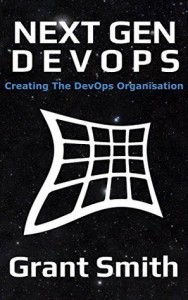 5. Next Gen DevOps: Creating the DevOps Organisation By Grant Smith
5. Next Gen DevOps: Creating the DevOps Organisation By Grant Smith
4.5 Average Amazon rating (2 Amazon ratings)
4.00 Average GoodReads rating (3 GoodReads ratings)
Book Description: A coherent and actionable DevOps framework is now available to businesses through a revolutionary new book, Next Gen DevOps: Creating the DevOps Organisation. Utilising nearly two decades’ experience at firms including AOL, Electronic Arts (EA) and British Gas’ Connected Homes, the book’s author and pioneer of the DevOps movement, Grant Smith, has distilled the essence of DevOps into an easily-implementable framework. Next Gen DevOps merges behaviour-driven development, infrastructure-as-code, automated testing, monitoring and continuous integration into a single coherent process. The book presents an implementation strategy that allows firms large or small, start-up or enterprise to embrace the move to DevOps.
By presenting a new way to look at the operations discipline, Next Gen DevOps challenges the old idea of a team languishing at the end of the software development lifecycle, forever context-switching between support tasks, security, data management, infrastructure and software deployment. Armed with the lessons learned from history and the Agile software development movement, combined with the latest in Software-as-a-Service (SaaS) solutions, cloud computing and automated testing, Next Gen DevOps sets out Grant’s vision for IT in business’ biggest evolution yet. “Every company is now an internet firm – and that means changes in the way we work,” Grant Smith says. “It’s time to drop the silos between our IT teams and work as organisations to improve and develop our products. Using simple theories and practices, Next Gen DevOps: Creating the DevOps Organisation offers a framework that can transform any internet company.
6. The IT Manager’s Guide to Continuous Delivery: Delivering Software in Days By Andrew Phillips, Michiel Sens
4.2 Average Amazon rating (2 Amazon ratings)
Book Description: Turning good ideas into marketable software quickly is now a business imperative for every enterprise. Delivering software features faster and with high quality is the first critical step. The subsequent step is to rapidly collect feedback from users to guide the next set of ideas for further improvements. Critical software development objectives such as these set the stage for The IT Manager’s Guide to Continuous Delivery: Delivering Software in Days, Instead of Months.
The book champions the concept of Continuous Delivery in enabling organizations to build automated software delivery platforms for releasing high-quality applications faster. The book also presents how Continuous Delivery is a set of processes and practices that radically removes waste from the software production process and creates a rapid and effective feedback loop with end users.
7. Leading the Transformation: Applying Agile and DevOps Principles at Scale By Gary Gruver, Tommy Mouser
Book Description: Software is becoming more and more important across a broad range of industries, yet most technology executives struggle to deliver software improvements their businesses require.
Leading-edge companies like Amazon and Google are applying DevOps and Agile principles to deliver large software projects faster than anyone thought possible. But most executives don’t understand how to transform their current legacy systems and processes to scale these principles across their organizations.
Leading the Transformation is executive guide, providing a clear framework for improving development and delivery. Instead of the traditional Agile and DevOps approaches that focus on improving the effectiveness of teams, this book targets the coordination of work across teams in large organizations—an improvement that executives are uniquely positioned to lead.
Conclusion
DevOps is an emerging methodology that is growing and changing quickly. This relative newness and rapid change make it difficult to find great DevOps books. I hope our list has made your search a little easier and that you have found some DevOps books you are interested in reading!

